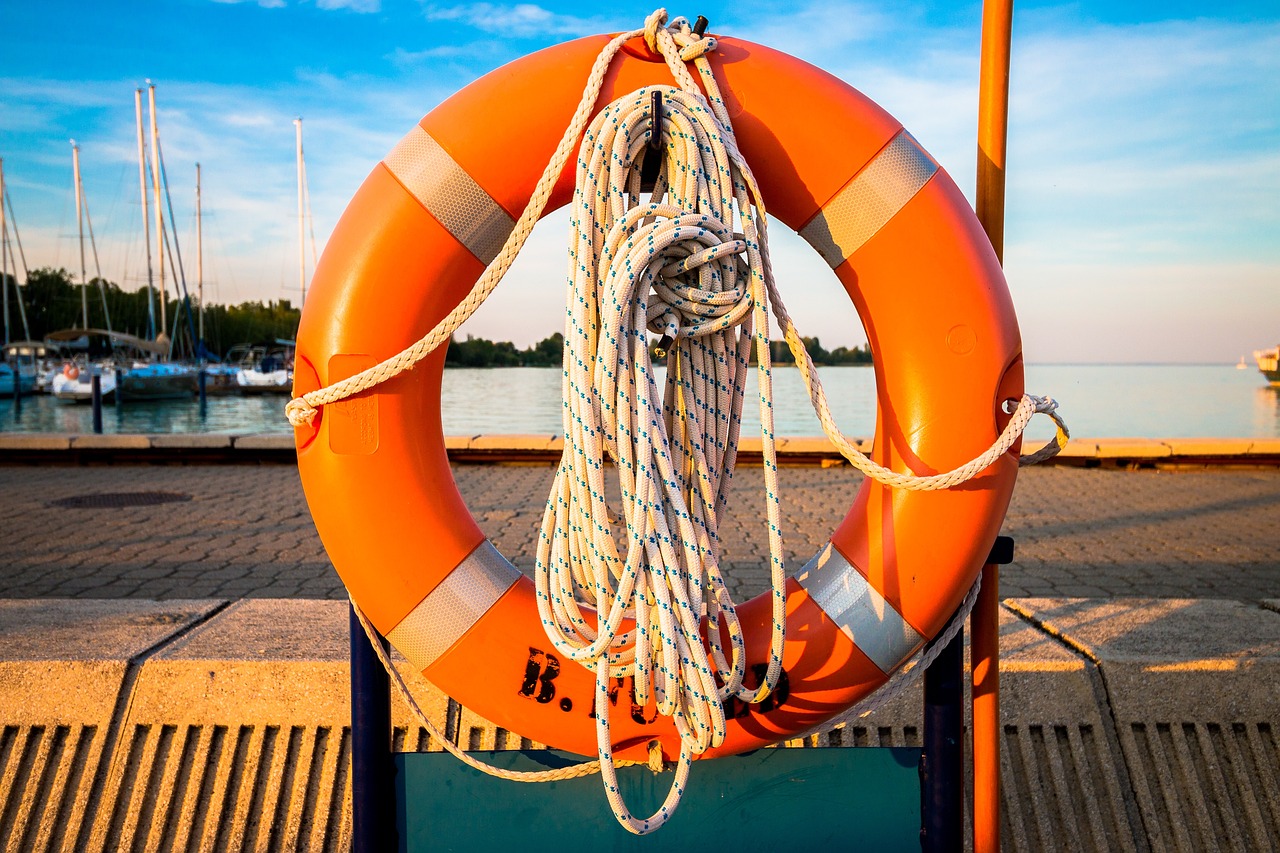A fisherman’s personality generally equates to a sense of adventure, a love of the outdoors, and the drive to create new opportunities for wealth through strategy and well-gained knowledge. Part of that knowledge is having the tools to survive in an emergency.
The safety of commercial fishermen equals wealth for the fishing businesses and families. It also allows them to enjoy their passion of being some of the last hunters and gatherers and act as stewards of the ocean. Putting safety at the forefront will allow generations of fishermen to carry on the historical legacy of catching wild-caught seafood in coastal communities nationwide and worldwide.
It’s safe to say that desk jobs are not of their ilk.
The tradeoff for choosing commercial fishing over an office job is the risk of getting injured, losing the life of a crew member or even a fisherman’s own. Today, numerous organizations have dedicated their time to implementing training courses and resources to keep fishermen well-informed to decrease the chances for harm or injury from tragic accidents or ill-equipt vessels.
Alaska Sea Grant led a study with one hundred twenty-four fishermen, and the top three subjects they desired more training and knowledge in were safety, crew and deckhand skills, and vessel maintenance.
However, it can take time to navigate which training to advise. The goal of this report is to outline certain safety techniques to allow fishermen the opportunity to work successfully and return safely to their loved ones season after season.
SAFETY TRAINING AVAILABLE FOR COMMERCIAL FISHERMEN
Running a “tight ship” includes many important aspects, such as:
- Operating EPIRBs
- Conducting MAYDAY calls
- Using signal flares
- Donning immersion suits and PFDs
- Launching life rafts and procedures to abandon ship
- Recover crew in a Man Overboard situation
- Skill for surviving in cold water and other in-the-water situations
- How to Handle Flooding
- Damage control
- Firefighting
- Helicopter Rescue
- Dewatering pumps
- Vessel stability
- Opioid overdose and Narcan training
- As well as other emergency procedure drills
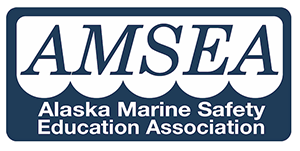 AMSEA: AMSEA, which stands for Alaska Marine Safety Education Association, is one of the main organizations that offer training throughout the year and across the country from Alaska to Florida and every coast in between. Many of their programs are free or offered at a reduced rate, thanks to industry partners such as the USCG, NOISH, the State of Alaska, Sea Grant, and other donors. Fees may vary based on location, and training courses vary by fishery and vessel types.
AMSEA: AMSEA, which stands for Alaska Marine Safety Education Association, is one of the main organizations that offer training throughout the year and across the country from Alaska to Florida and every coast in between. Many of their programs are free or offered at a reduced rate, thanks to industry partners such as the USCG, NOISH, the State of Alaska, Sea Grant, and other donors. Fees may vary based on location, and training courses vary by fishery and vessel types.
According to an interview with AMSEA Training Coordinator Ashley Green, AMSEA currently offers training throughout the year, including a 10 to 16-hour onboard drill conductor training class (one or two-day class), a 5-hour fishing vessel stability (subject to location), a 7-hour Mariner’s first aid & CPR class which includes opioid overdose response, and an ergonomic injury prevention course for commercial fishermen and seafood workers which is free and online.
“AMSEA was formed in the mid-80s when fishing fatalities were astronomical,” Green said. “We provide U.S. Coast Guard-accepted safety courses, specifically our fishing vessel drill conductor course.”
Training is focused on USCG requirements and is specific to each region, type of vessel, and fishery. “We refer people to the Fish Safe West Checklist Generator to determine your requirements and to work with their local USCG Commercial Fishing Vessel Safety Examiner and participate in a dockside exam,” Green said.
You can visit https://www.amsea.org/training or https://www.amsea.org/commercial-fishermen to learn more.
AMSEA-approved Resources:
- AMSEA also refers fishermen to local Sea Grant Consortiums as the closest resource for many fisheries-related issues and solutions.
- Fishing Partnership, which offers AMSEA-trained instructors for New England state fisheries.
- NPFVOA, which offers similar training to AMSEA for mariners in and around Seattle and parts of Alaska.
Other available training and helpful resources include:
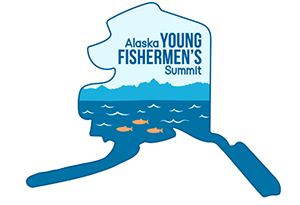 Alaska Young Fishermen’s Summit: A three-day event known as the Alaska Young Fishermen’s Summit (AYFS) offers training in areas such as the basics of managing finances, understanding the role of AK seafood in the global economy, fisheries regulatory process, public speaking training for effective testimonials, vessel maintenance, fuel efficiency, protocol for buying and selling. AYFS is organized and hosted by Alaska Sea Grant and supported by partners. It is hosted every other year in winter months.
Alaska Young Fishermen’s Summit: A three-day event known as the Alaska Young Fishermen’s Summit (AYFS) offers training in areas such as the basics of managing finances, understanding the role of AK seafood in the global economy, fisheries regulatory process, public speaking training for effective testimonials, vessel maintenance, fuel efficiency, protocol for buying and selling. AYFS is organized and hosted by Alaska Sea Grant and supported by partners. It is hosted every other year in winter months.
Since 2013, the Alaska Fishermen’s Network (AFN) mission has been to prepare the next generation of fishermen through resources, contacts, and opportunities, such as, “trips to D.C. to meet with legislators, boat cooking classes, storytelling workshops, crew speed hiring events and social gatherings around policy meetings” and more.
SAFETY COMMUNICATION
A communication-to-shore plan for captains and crews ensures important information can be easily and clearly shared between vessels and the Coast Guard to prevent or assist in emergencies.
VHF Radios: Very High Frequency (VHF) have been standard in the maritime industry for decades and continue to be the main source of communication for fishing vessels in the U.S. With the push of a button, VHF radios can be used for:
- Distress calls and safety
- Ship-to-shore communications
- Communicating with other vessels, both fishing and recreational
- Navigation (vessels to bridges, etc.)
- Marine operator to place calls to shore
- NOAA Weather Broadcasts
- Obtaining supplies and service
The Coast Guard monitors VHF Channel 16 and 9 twenty-four hours a day, seven days a week, and can locate vessels by tracking the VHF signal. For emergencies and Coast Guard assistance, fishermen should use VHF-FM Channel 16 (156.8 MHz) and dial 911. The USCG advises general inquiries to call your nearest Coast Guard unit, found through this link: https://www.uscg.mil/Responsive/
Chatting on channels 16 and 9 is prohibited. When connecting with other vessels, Fishermen can use 16 and 9 to direct communication to other channels for further discussion.
All fixed-mount VHFs offer Digital Selective Calling (DSC), which is similar to a “MayDay button.” When enacted, the DSC broadcasts an encoded distress call that can be picked up by nearby vessels that also have DSC. To use DSC, a MMSI (Maritime Mobile Service Identity) number must be obtained.
 Sexual Harassment and Assault: All sexual harassment and misconduct are required to be reported by law as of April 2023, and the USCG offers assistance for sexual assault and sexual harassment aboard. According to the USCG website, an anonymous report can be made through the CGIS Tips app, a free download from the App Store or Google Play Store. You can also email Coast Guard Investigative Services at [email protected] or call the Coast Guard's National Command Center (NCC) at 202-372-2100. They are available twenty-four hours a day, every day of the year.
Sexual Harassment and Assault: All sexual harassment and misconduct are required to be reported by law as of April 2023, and the USCG offers assistance for sexual assault and sexual harassment aboard. According to the USCG website, an anonymous report can be made through the CGIS Tips app, a free download from the App Store or Google Play Store. You can also email Coast Guard Investigative Services at [email protected] or call the Coast Guard's National Command Center (NCC) at 202-372-2100. They are available twenty-four hours a day, every day of the year.
Satellite communication comes in many forms and is the preferred method of communication for fishermen in remote parts of the world. Small hand-held telephones and messaging devices can be used for some communication listed above and are great ways to stay in touch with family back home. Here are a few communication devices used by fishermen:
- Starlink for Maritime: The Starlink antenna is revered by many due to its high-speed internet access on open waters, which enables access to NOAA marine weather reports, communication between vessels, weather navigation, and the location of fishing grounds. Starlink can also facilitate FaceTime, emails, fast downloads and uploads, and Zoom calls. Monthly plans are available.
- Inmarsat: allows voice calls, messaging, SOS alerts, and tracking with “near-global coverage.” It also works in prepaid or monthly subscriptions, with flat-rate calling charges around the globe without roaming charges. Features vary by service plan.
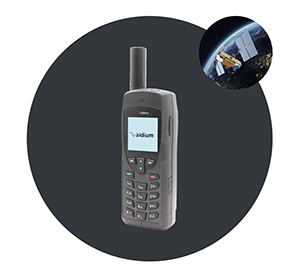 Iridium: a satellite communication system that can be accessed using a small hand-held telephone to enable voice, messaging, and data services. Using “Low Earth Orbit” satellites for communication, Iridium offers 100% global coverage.
Iridium: a satellite communication system that can be accessed using a small hand-held telephone to enable voice, messaging, and data services. Using “Low Earth Orbit” satellites for communication, Iridium offers 100% global coverage. 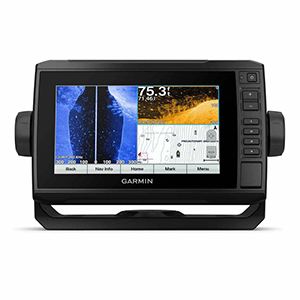 Garmin InReach: a messaging device that also acts as an SOS beacon. You cannot call or receive calls.
Garmin InReach: a messaging device that also acts as an SOS beacon. You cannot call or receive calls.
Cell phones are not as reliable on water as they are on land. The range is short, and most are not water resistant. However, they are convenient when active and can be used along with VHF when in range.
Headset: Headsets can be used between captains and crews on larger fishing vessels to easily communicate from bow to stern and above and below deck. However, they do not offer emergency channels.
For Distress Calls:
AMSEA’s Drill Instructor Course gifts each attendee the “5 Elements of a Mayday Call” sticker to keep near the fishing vessel radio for easier communication in case of an emergency with vessels that have four or more crew members aboard. If the vessel has less than four crew, instructions must be readily available. Below is an example of a Distress Broadcast as directed by AMSEA’s Commercial Fishing Vessel Emergency Instruction and Drill Manual.
Distress Broadcast Instructions:
- Make sure communications equipment is on.
- Select 156.8 MHz (VHF channel 16), 2182 kHz, or other distress frequency used in your area of operation. Note: VHF channels 16 and 2182 kHz are for emergency and calling purposes only.
- Press the microphone button. Speak slowly, clearly, and calmly. Say: “MAYDAY, MAYDAY, MAYDAY This is the F/V (vessel name), F/V (vessel name), F/V (vessel name). Over.”
- Release the microphone button briefly and listen for acknowledgment. If no one answers, say: “MAYDAY, MAYDAY, MAYDAY This is the F/V (vessel name), F/V (vessel name), F/V (vessel name). My position is (use latitude/longitude, nearby landmarks, distance from known points, LORAN readings, etc.)”
- Repeat three times. “I am F/V (vessel name). (Sinking, on fire, listing, etc.) I estimate that I can stay afloat for hours/minutes. I have (number of) persons on board. My vessel is (type of vessel, feet long, has a color hull with color trim and masts). I will be listening on the channel (direct to channel number). This is the F/V (vessel name). Over.”
- Release the microphone button. If the situation permits, stand by the radio to await further communications with the Coast Guard or another vessel.
- If there is no answer and the situation permits, try another channel and repeat.
MARINE GPS & WEATHER MONITORING TOOLS
Global Positioning Systems (GPS) are important for much more than finding fish and locating gear. They are imperative in navigating waterways, avoiding collisions, and, most importantly, relaying information in emergencies.
GPS uses satellites to track your global position through handheld/portable devices, fixed-mount displays, and multifunction displays.
Other Navigation Tools:
Radar - an important tool to identify coastlines and collisions with structures and other vessels when you cannot see (for example, in dense fog or night).
Automatic Identification System (AIS) - is transmitted through a vessel’s VHF radio. All vessels of a certain size must have AIS and must transmit signals. Smaller vessels may have an AIS receiver, which means it only receives and does not transmit.
Chart Plotter - an electronic version of paper nautical charts using a display screen. It uses a GPS to show exactly where a vessel is located on the chart. Also used to mark the location of in-water fishing equipment, such as traps, nets, long lines, etc.
Starlink for Maritime offers high-speed internet access, enabling access to NOAA marine weather reports, communication between vessels, weather navigation, and the location of fishing grounds. Monthly plans are available.
Weather Monitoring Tools
Weather is the defining factor in all fisheries and can change quickly. Having efficient means to determine weather can be the difference between a successful run, life, injury, and death. In case one tool malfunctions, it’s advisable to use several when determining weather. Here are a few most relied on in the commercial fishing industry:
 VHS: The USCG broadcasts updated weather information on Channel 22A after dispatching the first advisory on Channel 16. USGC offers near-continuous coverage for the U.S. Great Lakes, Hawaii, and populated Alaskan coastline for up to 20 miles off-shore, sometimes greater. VHS is also used to communicate with other vessels to determine weather patterns.
VHS: The USCG broadcasts updated weather information on Channel 22A after dispatching the first advisory on Channel 16. USGC offers near-continuous coverage for the U.S. Great Lakes, Hawaii, and populated Alaskan coastline for up to 20 miles off-shore, sometimes greater. VHS is also used to communicate with other vessels to determine weather patterns.
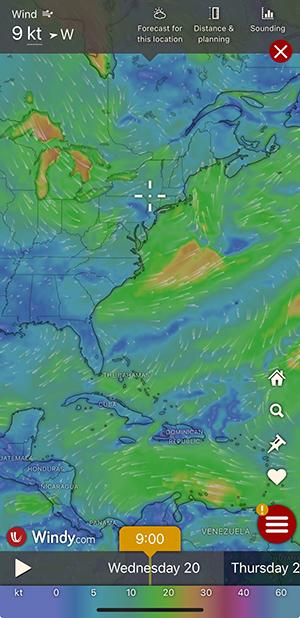 Weather Apps: Many apps are available now, and here are the top apps voted by commercial fishermen:
Weather Apps: Many apps are available now, and here are the top apps voted by commercial fishermen:
- Windy.com app is one of the most popular among fishermen thanks to its easy-to-read weather radar and satellite imagery. Available on iOS and Google Play for Android.
- Windy.app is a different app with a similar name and tools, available on iOS and Google Play for Android.
- NOAA also has a few apps, two of which are the NOAA Marine Weather App and Clime: NOAA Weather Radar Live. Both are available for iOS.
- Runner-up: Buoyweather.
Starlink for Maritime: Although Starlink offers high-speed internet, having backup systems and programs, as mentioned above, is imperative in case the Starlink antenna malfunctions.





